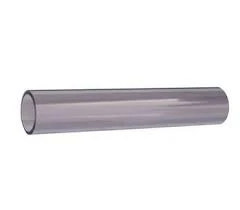okt . 12, 2024 03:00 Back to list
Cost Analysis of HDPE Sheets for Various Applications and Industries
Understanding the Cost of HDPE Sheets Factors and Implications
High-Density Polyethylene (HDPE) sheets are a popular material used in a variety of applications ranging from construction to food packaging. The cost of HDPE sheets can vary significantly based on several key factors, which are essential for customers to understand when deciding to purchase this versatile plastic material.
What is HDPE?
HDPE is a type of thermoplastic that is known for its high strength-to-density ratio. It is resistant to impact and can withstand a wide range of temperatures, making it an ideal choice for both indoor and outdoor applications. Common uses of HDPE sheets include signage, containers, automotive parts, and industrial applications. The material is also recognized for its resistance to moisture and chemicals, which adds to its durability and longevity in various environments.
Factors Affecting HDPE Sheet Cost
1. Thickness and Size One of the most significant factors influencing the cost of HDPE sheets is their thickness and dimensions. Thicker sheets typically cost more due to the increased amount of material used. Additionally, larger sheets may come at a premium due to logistics and handling considerations.
2. Quality and Grade HDPE is available in various grades, each designed for specific applications. Industrial-grade HDPE sheets may cost more than standard commercial-grade sheets. Higher-quality materials often exhibit superior durability and resistance to environmental factors, which can justify the higher price.
3. Color and Finish While HDPE sheets are commonly available in black and natural finishes, custom colors and specialized finishes (such as textured surfaces) can increase the price. Manufacturers may charge extra for the additional processing involved in creating these customized products.
hdpe sheet cost

4. Quantity and Bulk Pricing Purchasing HDPE sheets in bulk often allows buyers to take advantage of reduced prices per unit. Suppliers frequently offer discounts for large orders, which can significantly lower the overall cost for businesses that need substantial quantities for their projects.
5. Supplier and Location The cost of HDPE sheets can also be influenced by the supplier’s pricing structure and geographical location. Different regions may have varying shipping costs, taxes, and market demand, contributing to price fluctuations. Additionally, established suppliers with a reputation for quality might charge more than newer, less experienced companies.
Market Trends and Considerations
The market for HDPE sheets has seen shifting trends, particularly as more industries seek sustainable and recyclable materials. As environmental concerns rise, the demand for high-quality, eco-friendly HDPE products has surged. Recycled HDPE sheets are becoming increasingly available, offering a cost-effective and environmentally friendly alternative to virgin materials. The pricing of recycled sheets may differ from new materials due to the processing required to re-manufacture them.
Conclusion
When it comes to HDPE sheets, understanding the cost implications is crucial for efficient budgeting and planning in various projects. Factors such as thickness, quality, color, purchasing quantity, and supplier location play significant roles in determining the overall price. As businesses and individuals navigate their options, considering these variables can lead to more informed purchasing decisions that align with both financial constraints and project requirements.
Ultimately, whether for industrial applications or creative projects, HDPE sheets present an excellent combination of affordability, durability, and versatility. By carefully analyzing their needs and understanding the underlying cost factors, buyers can ensure they select the right materials for their specific applications while staying mindful of their budget. As the market continues to evolve, remaining informed about HDPE products and pricing will empower consumers to make the best investment possible for their projects.
-
Premium PVC Soft Sheets: Clear, Flexible & Durable
NewsAug.12,2025
-
Premium PVC Round Rods: Durable, Chemical Resistant, Easy to Machine
NewsAug.11,2025
-
PP U-channel: Chemical-Resistant, Lightweight & Durable
NewsAug.10,2025
-
Transparent PVC Pipe: Clear Flexible Tubing for Fluids
NewsAug.09,2025
-
Durable PP Rigid Sheet: Versatile & High-Quality Plastic Panels
NewsAug.08,2025
-
Premium Glossy PP Rigid Sheet – Durable & Versatile
NewsAug.07,2025

